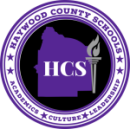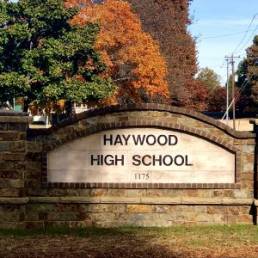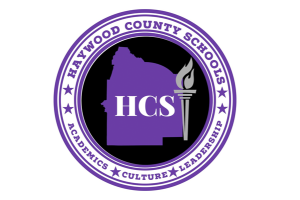Data Dive – HHS
Throughout the school year, students at each school in Haywood County Schools are assessed three times in order to gauge where each individual student is on their personal learning journey. These assessments allow teachers to monitor student learning progress while also gaining insight into what specific areas of a subject a student could use extra support.
While teachers, schools, and districts are measured mostly on TNReady data, the benchmark assessments given throughout the year provide a more accurate view at the learning taking place in the classroom. The assessments used to measure learning in each school in HCS are the AimsWeb assessments in Reading and Math and the IReady assessments in the same subjects. The AimsWeb assessment is given in Kindergarten through Tenth Grades. The IReady assessment is given in grades K-8. Students in high school also take End of Course assessments (EOC’s) which are the equivalent of the TCAP assessments given in grades 3-8.
The AimsWeb assessments in Reading and Math measure basic skills in each subject. Basic skills include reading comprehension and fluency and making calculations of measurements, sizes, and amounts. AimsWeb is an assessment that is used to monitor progress and ensure the majority of our students at each grade level are working toward basic grade level skills in each subject.
End of Course assessments measure mastery of state standards that go well beyond the basic skills of reading and math. Questions on standardized tests are geared toward the literary aspects of a reading passage rather than the comprehension aspects. In math, standardized test questions focus on the “why” and “how” of a problem rather than the basic computation.
Like most students in HCS, ninth and tenth grade students at HHS showed growth throughout the year on the AimsWeb assessments in reading and math. The data is below.
AimsWeb – 9th and 10th Grade
AimsWeb uses a three tiered system to measure student progress and provide information regarding where students are on their learning paths. While we want all students to be in Tier 1, a more realistic goal (especially coming on the heels of two fractured years of in-person learning) is to see substantial growth in our collective group of Tier 1 students. The tiers are described below:
Tier 1 = Low Risk (about 75%–95% of students in this group will meet the target): Students are on track to meet the end-of-year target and are least likely to need intervention. These students should continue to receive the general instructional program. Typically, the majority of students fall into this category.
Tier 2 = Moderate Risk (about 25%–65% of students in this group will not meet the target): Students are not on track and have a moderate risk of not meeting the end-of-year target. These students require some type of intervention, often taking the form of supplemental small group instruction.
Tier 3 = High Risk (about 50%–90% of students in this group will not meet the target): Students are not on track and are typically well-below grade level. These students have a high risk of not meeting the end-of-year target without intensive, individualized instructional intervention.
The full AimsWeb reports are below.
9th Grade
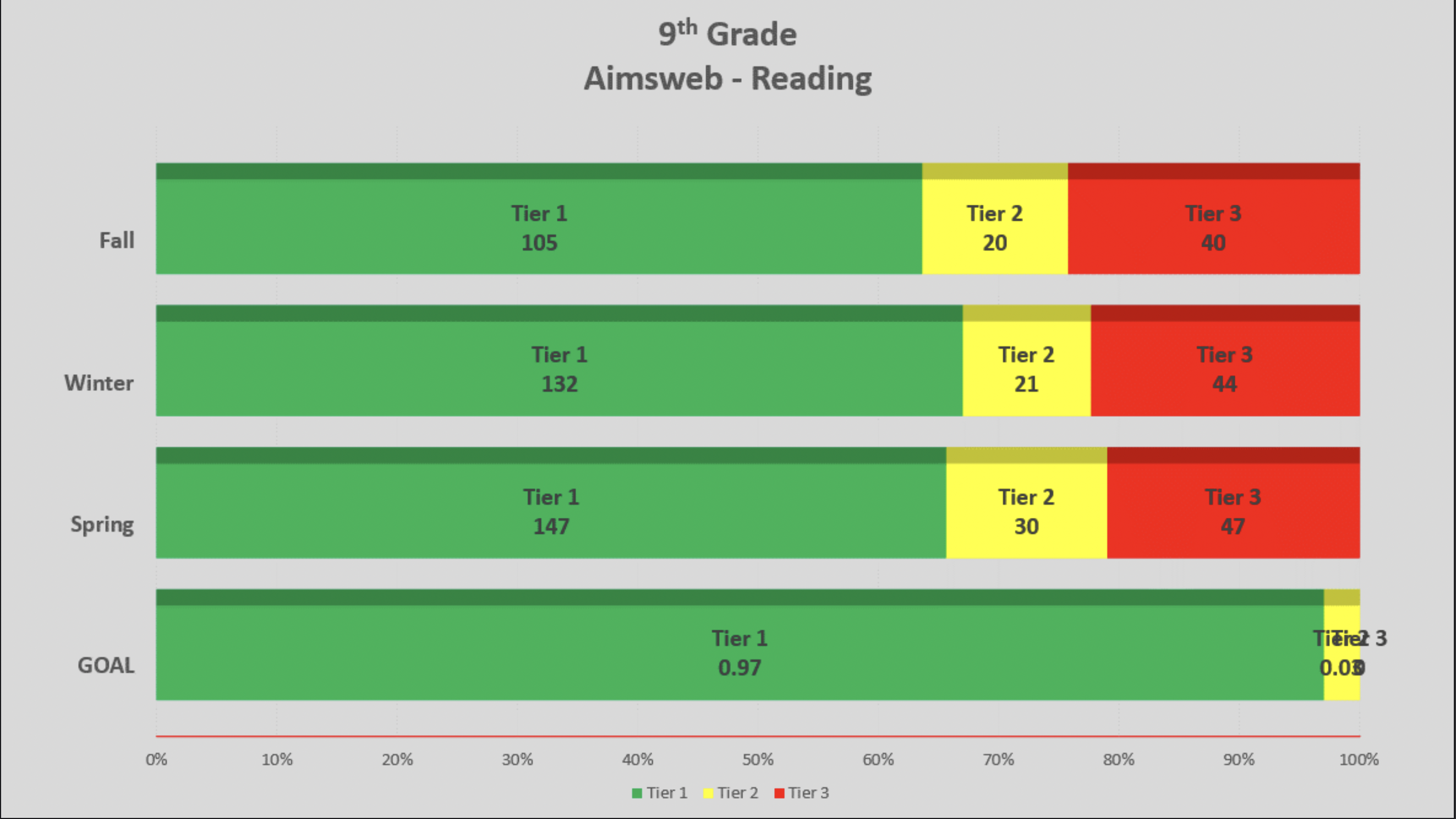 Ninth grade students showed growth throughout the year on the reading portion of AimsWeb. At the beginning of the year, 105 students were in Tier 1, but that number grew to 147 by the end of the year and made up 65% of the class.
Ninth grade students showed growth throughout the year on the reading portion of AimsWeb. At the beginning of the year, 105 students were in Tier 1, but that number grew to 147 by the end of the year and made up 65% of the class.
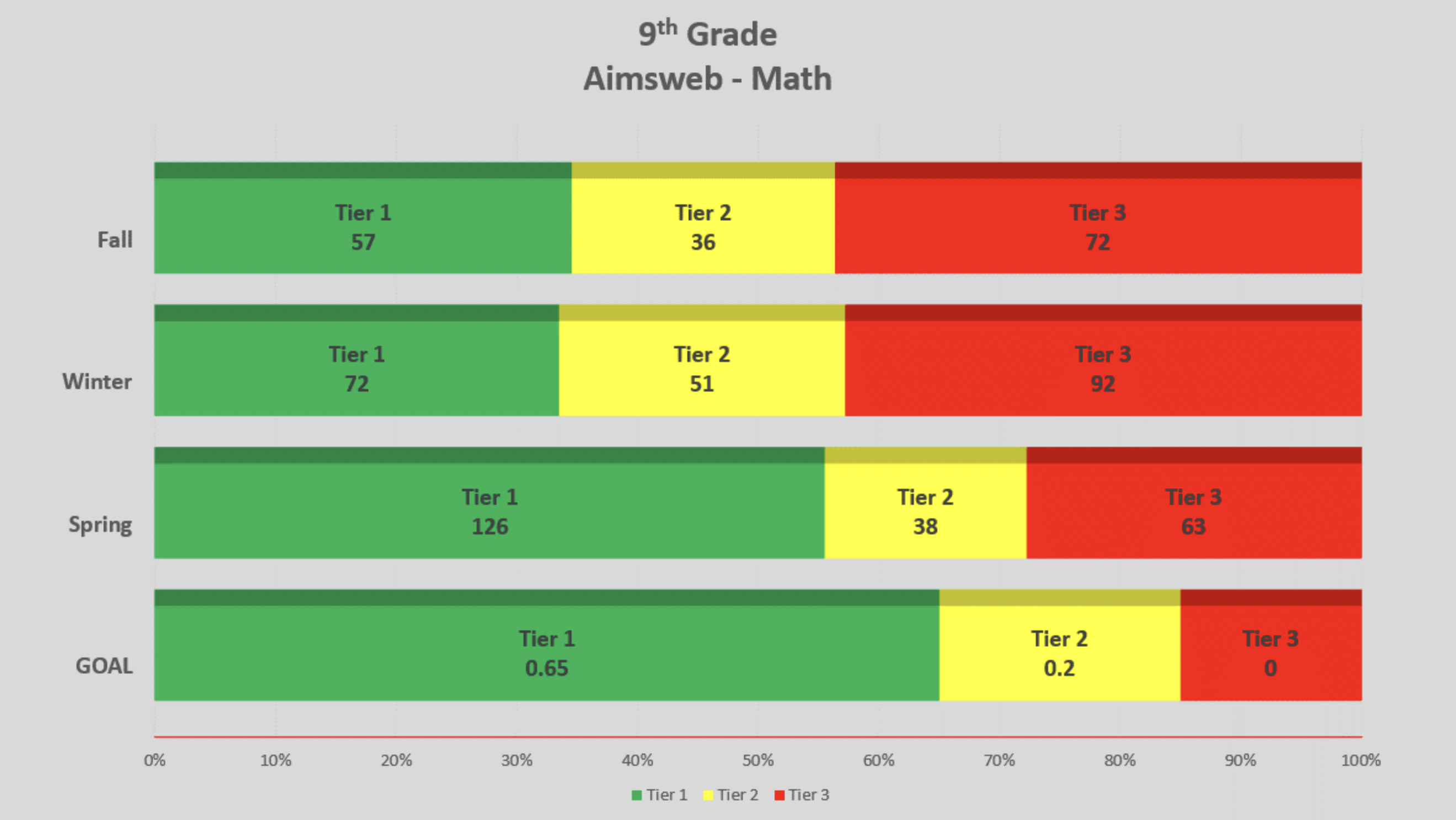
Ninth grade students showed tremendous gains in math throughout the year at HHS. The number of Tier 1 students doubled from 57 to 126 over the course of the school year. The number of Tier 3 students shrank from 72 to 63.
10th Grade
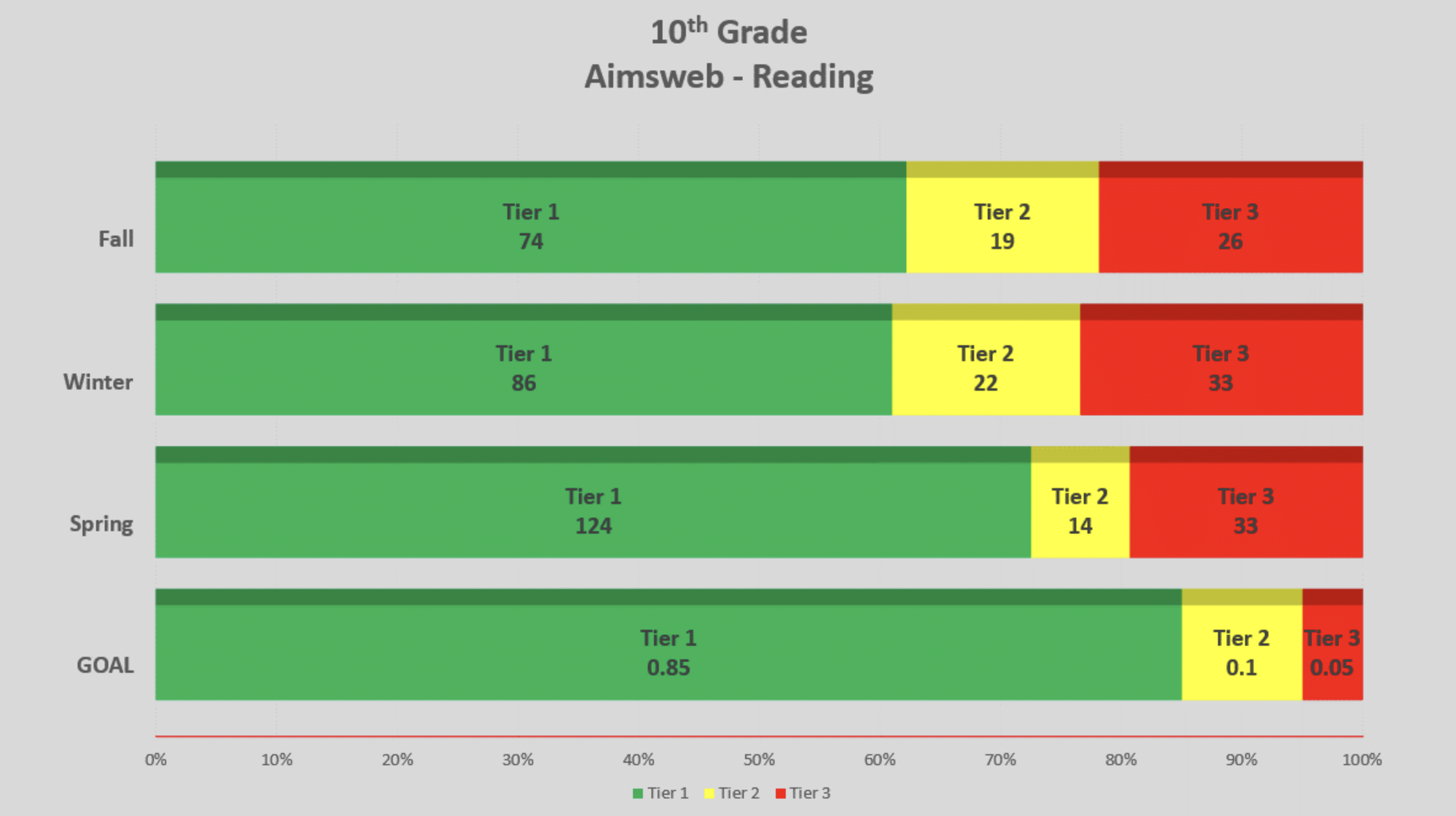
Tenth grade students at HHS also showed tremendous gains in reading throughout hte year. The number of Tier 1 students increased by 50 and totaled 124 at the end of the year. That number made up over 70% of the class.

Tenth grade math students also showed huge gains growing from 45 Tier 1 students to 102 Tier 1 students by the end of the year! Tier 3 students shrank from 52 to 45 by year’s end, as well.
End of Course Assessments
English
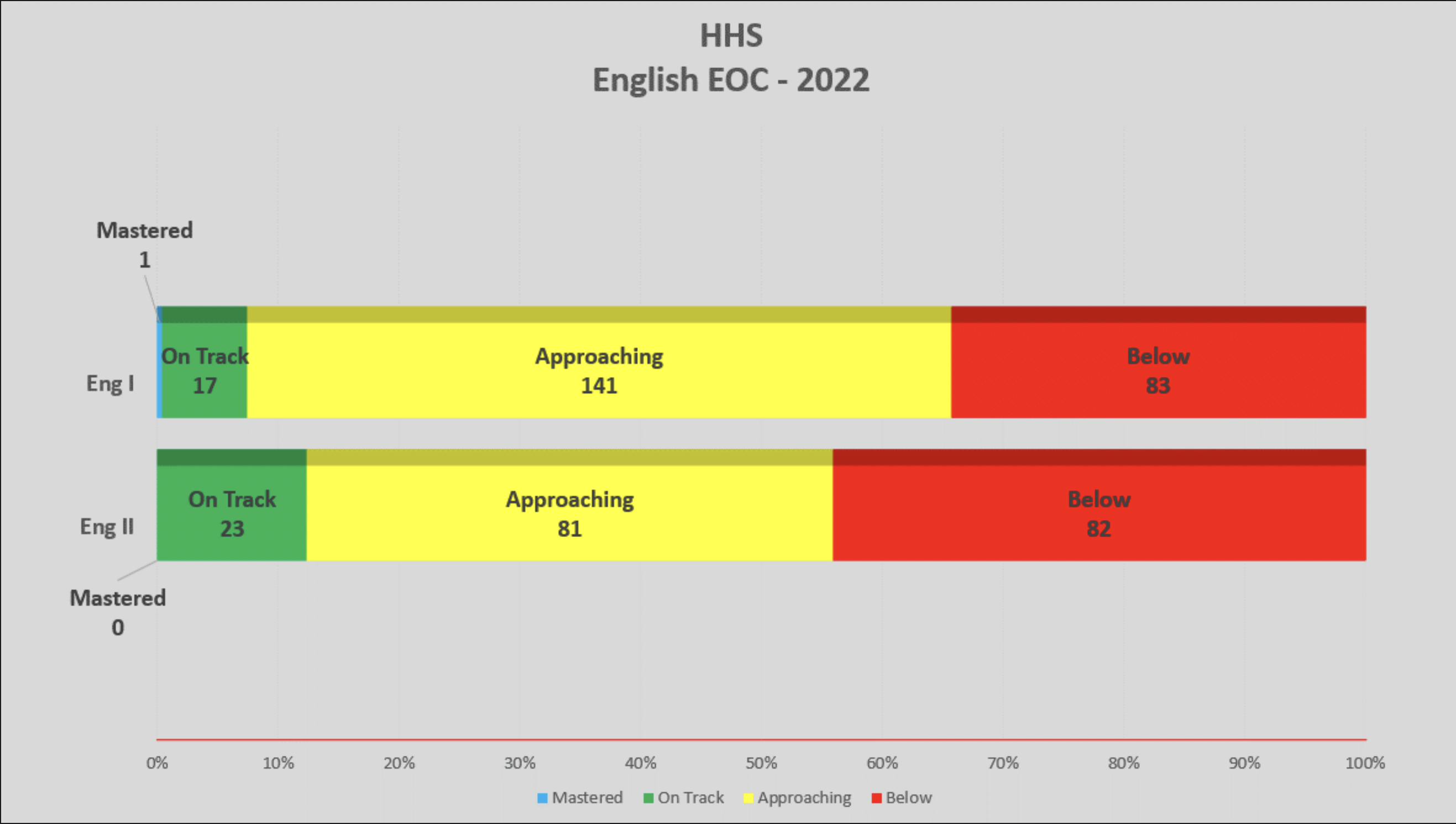
On the English EOC’s, HHS 9th grade students had 18 students who were on track or mastering ninth grade standards. 141 ninth grade students were approaching grade level skills in ELA, and 83 students were below grade level expectations.
Tenth grade students had 23 students on track. 81 students were approaching grade level expectations in ELA, and 82 students were below grade level.
70% of the Freshman class was on or approaching grade level in ELA.
55% of the Sophomore class was on or approaching grade level in ELA.
Math
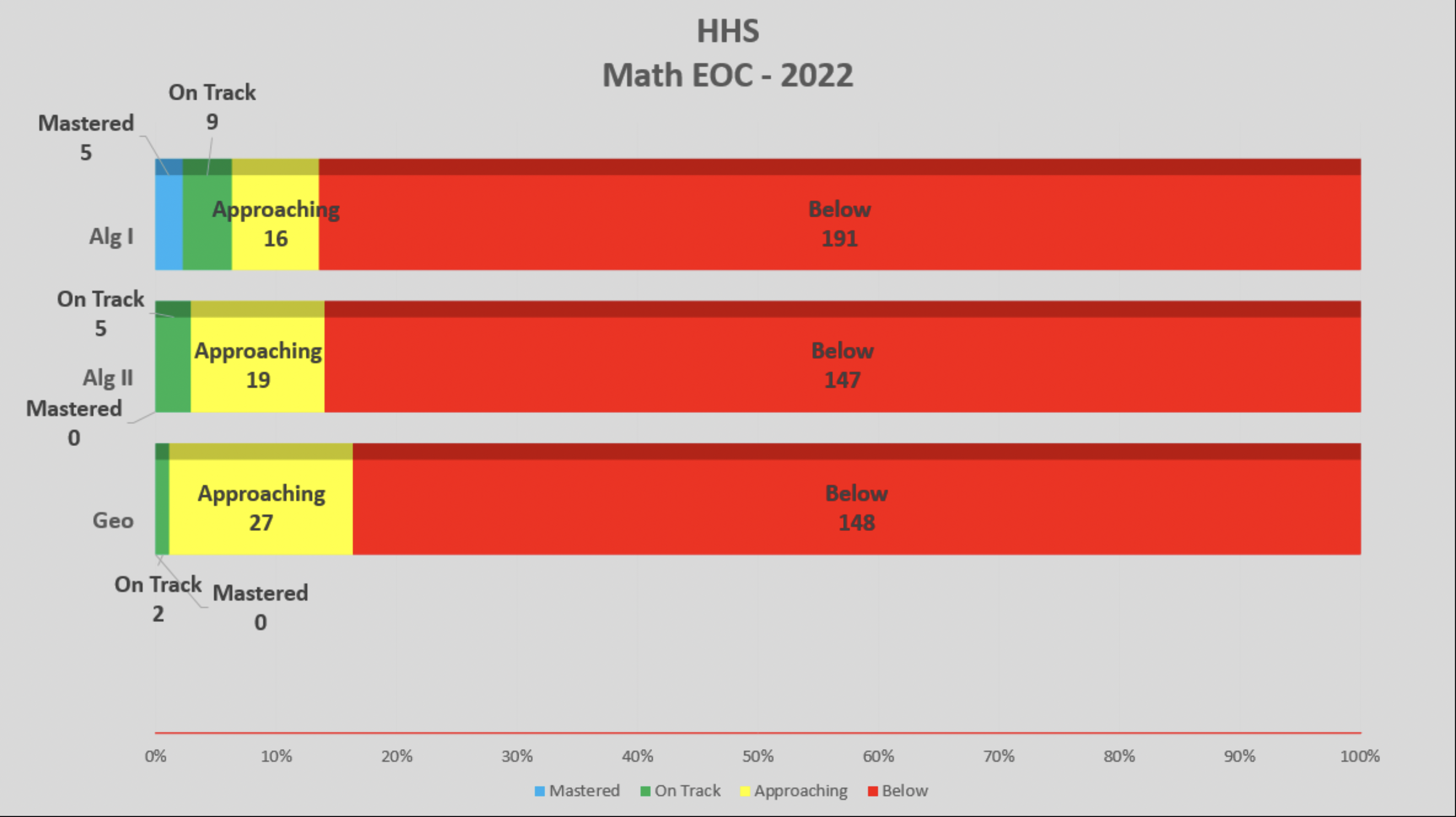
Algebra 1 students at HHS had a total of 14 students who were on track or mastering Algebra 1 standards. 16 students were approaching grade level mastery, and 191 students were below grade level expectations for Algebra 1.
Algebra II students had five students who were on track with Algebra II standards. 19 students were approaching grade level expectations for Algebra II, and 147 students were below grade level expectations for Algebra II.
Two students in HHS were on track for grade level success in Geometry. 27 students were approaching grade level success in Geometry, and 148 students were below grade level.
Biology/US History
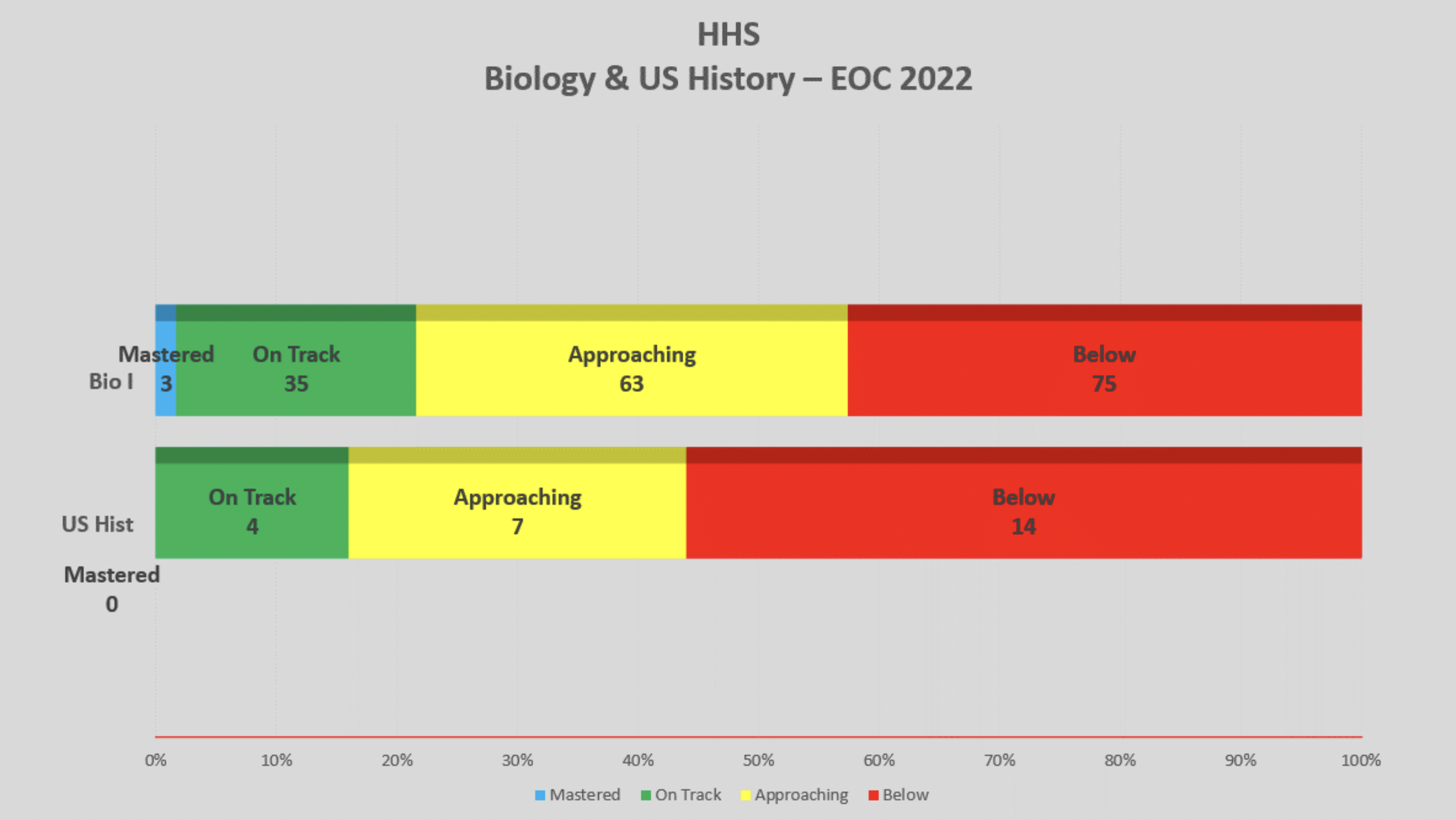
Biology I students had some success on the EOC. 38 students were on track or mastering Biology standards. 63 more students were approaching grade level expectations with 75 students falling below grade level in Biology. Over 60% of Biology students were approaching or on grade level in Biology.
US History students had four students on track with seven students approaching grade level standards. 14 students fell below grade level expectations for US History standards.
Advanced Placement
Advanced Placement courses give high school students the opportunity to take college level courses in high school. In order to receive college credit, students must make at least a “3” on the AP exam. Some colleges and universities will accept a “3” and award the student college credit, but the decision to do so is solely the decision of the post secondary institution. Nearly all colleges and universities will award credit to students who score a “4” or “5” on their AP exams.
Haywood High School offers AP courses in the following subjects:
- Art History
- Computer Science
- English Literature and Composition
- Human Geography
- Government
- Psychology
- World History
The following chart shows the results of the AP exams in the various AP courses offered at Haywood High School during the 2021-2022 school year.

Even though there were no students who scored a “4” or a “5”, the opportunity and availability to experience the content of an AP course can be invaluable for students.
AP courses offer college-level curriculum to high school students and allow students to experience the rigor of a collegiate-level course. Haywood High School offers any student the opportunity to take an AP course and challenge themselves academically.
We would like to see more scores that are 3’s or higher, but we know that exposure to a rigorous curriculum will help our students in the future.
While the data at HHS has room for improvement, it is important to acknowledge the multiple pathways for success that are offered to our students at HHS through CTE dual-enrollment pathways and the new Early College High program that begins this school year. Programs like these help set our students up for post secondary success and provide opportunities that stretch well beyond a standardized test score.
We will use this data, however, for reflection and as a means for improvement to give our students the best education possible. We look forward to the beginning of this school year and the opportunities that await our learners.
